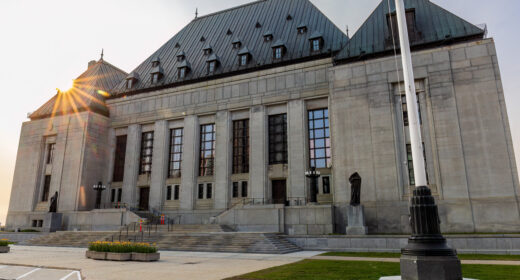The red poppy’s significance is rooted in the fields of Flanders, Belgium, where World War I was fought.
These fields were covered in poppies and were forever memorialized in the famous poem “In Flanders Fields” by Canadian military doctor John McCrae in 1915. The poppy serves as a poignant tribute to those who served in the Allied cause.
Madame Anna Guérin from France conceived the Remembrance Poppy, drawing inspiration from John McCrae’s poem. She established a charitable organization to aid war-torn regions in France and crafted fabric poppies to raise funds. Anna introduced her idea to The Great War Veterans Association, now known as the Royal Canadian Legion. On July 6, 1921, the idea of using the poppy as a national symbol of Remembrance was adopted.
On November 11, Canadians gather to remember the sacrifices of those who fought and died in wars, especially during World War I. This solemn day, known as Remembrance Day in Canada, is marked by the tradition of wearing red poppies, a symbol of remembrance that adorns the lapels of TV news broadcasters, politicians, and everyday citizens.
What may not be widely known is that wearing poppies is tied to intellectual property (IP) issues. The Royal Canadian Legion (RCL), a respected veterans’ organization, holds a trademark on the poppy in Canada. This trademark was granted by an Act of Parliament in 1948, specifically for use in remembrance. It covers the Legion’s Poppy logo and the Poppy symbol as it relates to Remembrance, not the actual Poppy flower unless it’s misrepresented as the Legion’s Poppy associated with remembrance or fundraising for purposes other than the Poppy Campaign.
Notably, the trademark extends to any color or configuration of the poppy when used as a symbol of remembrance. This is where it becomes relevant, as various groups have created their versions of the poppy, like white poppies symbolizing peace or rainbow-hued LGBTQ poppies.
Instances have occurred where individuals or groups were reminded that they were violating the Legion’s IP when they made poppies for sale or donation. Besides trademark issues, the Legion’s website includes a copyright warning, prohibiting the commercial redistribution of materials without written permission.
The proceeds from poppy-related items sold by the Legion support veterans’ welfare programs. As you wear your red poppy on Remembrance Day and make a donation, remember that even this simple emblem can be subject to trademark and copyright concerns. The poppy’s journey from a symbol of remembrance to a matter of intellectual property reflects the evolving challenges of protecting cultural symbols and traditions.




